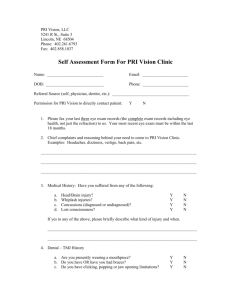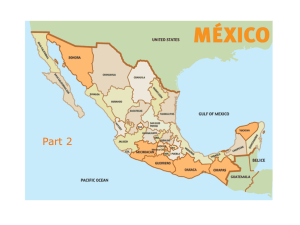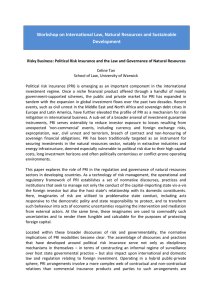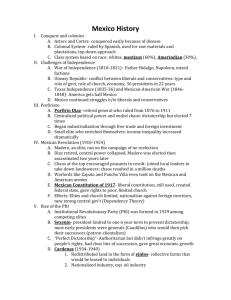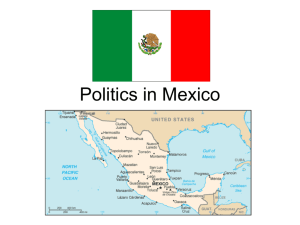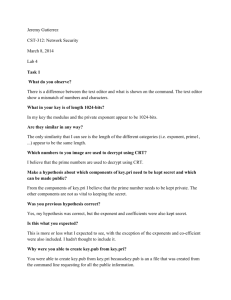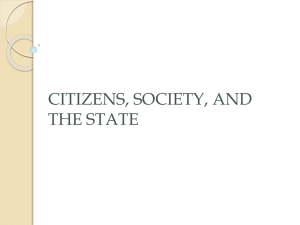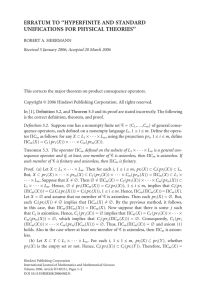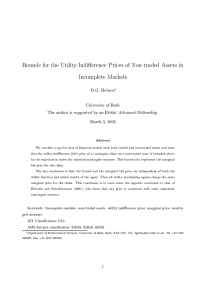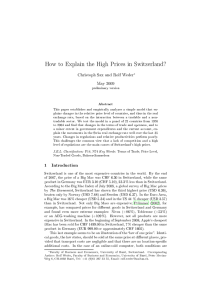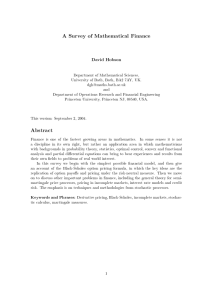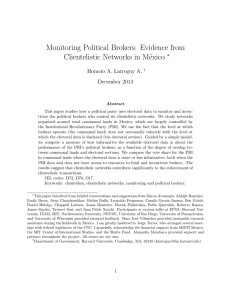Mexico - annemccanless
advertisement
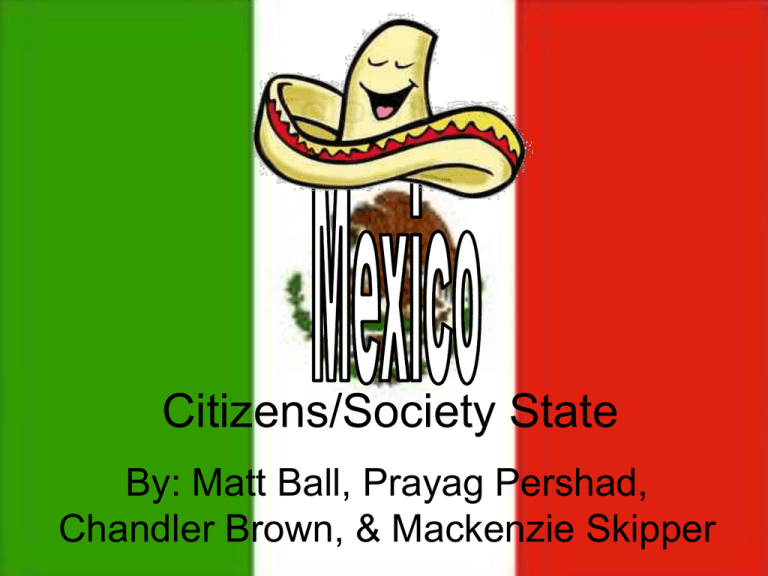
Citizens/Society State By: Matt Ball, Prayag Pershad, Chandler Brown, & Mackenzie Skipper Population Pyramid • Mexico is in stage 3 in the Demographic Transition Model (moderate growth) • Medical practices that were introduced in stage 2 are now beginning to affect the population • More people are more likely to live urban areas rather than on farms due to industrial jobs • Crude Birth Rate is beginning to drop due to more women in the work force, medical advancements and decline in the Infant Mortality Rate • Crude Death Rate begins to drop due to medical advancements introduced in stage 2 • Number of elders increasing (a refelction of transition from stage 2 to stage 3) • Dependency Ratio (ages 0-14 and 75+) is increasing which means the people in-between have the burden of supporting those people • Sex ratio is even Freedom House Information • (definition) Freedom House: an organization that studies democracy around the world, ranks countries on a 1 to 7 freedom scale, with 1 being the most free and 7 the least. • Mexico is rated a 3. • PRI has monopolized the government and politics, it has also left little to criticize the government or influence public opinion. • The government started to reward media companies that supported the PRI. Freedom House Information • Mexico is becoming more democratic since the PRI has lost some power in the 1980's. • Citizens now have access to a broader range of political opinions and freedom of expression. • Some other info Freedom House provided: 116 million people live in mexico, 9420 USD GNI and PPP CLEAVAGES Cleavages • Cross-cutting (conflictual): divide society into many potential groups that conflict on one issue and cooperate on another • Coinciding (reinforcing): every dispute aligns the same groups against each other • Current trend: cross-cutting becoming coinciding Coinciding Cleavages Urban, middle class mestizos (European and Amerindian blend) from north VS. Rural, poor Amerindians (indigenous Mexicans) from south Mestizo • Blend of European and Amerindian • Wealthier • Urban residents v. Amerindian • • • • Indigenous people Poorer Live in rural areas 30% of population Urban • 75% urban • Less-inclined to support PRI (Institutional Revolutionary Party • Receptive to political and economic reform v. Rural • PRI controls peasants • Camarillas (patronclient system): Political support in exchange for small favors from politicos • Politicos: traditional chiefs of camarillas Social Class Gini coefficient: indicates economic inequality . Mexico’s is .48 (high disparity). • • • • Middle Class-Rich Top 10% earn 35.6% of Mexican income Growing middle class More likely to support PAN (National Action Party) More likely to vote • • • • Poor Bottom 10% earn 1.6% High infant mortality rates Low levels of education Shorter life expectancy North • Dry and mountainous • Prosperous from U.S. trade • Mostly Mestizo • Higher incomes • High education levels – 8.1 years avg. • Supportive of free market v. • • • • • South Subtropical More rural influence More Amerindians Lower avg. incomes Low education levels – 6 years avg. • Source of Zapatista Movement – Rights for natives Changes • If poor continue to increase incomes faster than average, they may join the middle class. • Spreading job opportunities to new regions may reduce regional/ethnic cleavages. Political Participation • Revolutions and protests characterize much political participation • Mexicans used to be ruled by elites in an authoritarian system • Now, there are regular elections that are becoming more and more legitimate. Political Participation • Patron-client system/patron-clientelism – People received political support in exchange for favors – Stems from caudillos from the early 19th century and warlordism • Caudillos – leaders had supporters who he granted favors to – The groups made camarillas, which were hierarchical networks where the exchange of offices and other benefits occurred – Patron-clientelism is still important – Many citizens do not trust government officials Political Participation • Protests – The government usually responds to protests by giving in to demands and by including citizens in the political process through cooptation – After government soldiers killed over 200 student protesters in Tlatelolco Plaza in 1968, the next president recruited many student activists and increased the government’s spending on social services. Political Participation • Protests (continued) – Zapatista Movement was a protest that represented the Amerindians • Voting – Before the 1990s, elections were controlled by the PRI – Patron-clientelism caused high voting rates Political Participation • Voting – Influenced by 3 main factors: region, education, and income • Region – North – 47% for Felipe Calderón (PAN), 27% for Roberto Madrazo (PRI), & 24% for Andres Manuel Lopez Obrador (PRD) – South – 29% for Calderón, 27% for Madrazo, & 40% for Obrador • Education – Higher educated citizens were more likely to vote for Calderón – 42% of those with a college education voted for him – 38% of college grads voted for Obrador and only 14% voted for Madrazo Political Participation • Voting – Influenced by 3 main factors: region, education, and income • Income – Upper income – 50% for Calderón, 30% for Obrador, and 14% for Madrazo Calderón Obrador * Percentages based on 2006 election Madrazo Civil Society • Many groups refuse to cooperate with the PRI which create an atmosphere where public protests are acceptable • The PRI practiced state corporatism to ensure that no one group challenged the government • The PRI separated the interest groups into three sectors: labor, peasants and the middle class (“popular”) • The Confederation of Employers of the Mexican Republic (a labor group) was an autonomous group that vocally and publicly criticized the government Civil Society Cont. • A group of business men who were not incorporated into the government’s system started the downfall of the PRI’s civil society • The group formed PAN, a political party, in 1939 even though the party did not successfully challenge the PRI until 2000 presidential election with candidate Vicente Fox • In 2006 the PAN victory improved business interests and broke up the PRI’s old state corporatism Women • Number in both houses of legislature has risen – 113/500 House of Deputies – 22/128 Senate • 1996 election law: – political parties must sponsor women candidates – 30% of party list in proportional and SMD must be women Women in Society • • • • Rise in working force Dominantly in domestic workforce Mostly seen as home caretakers Mostly teachers or nuns That’s All!
